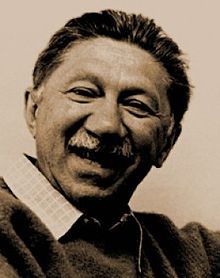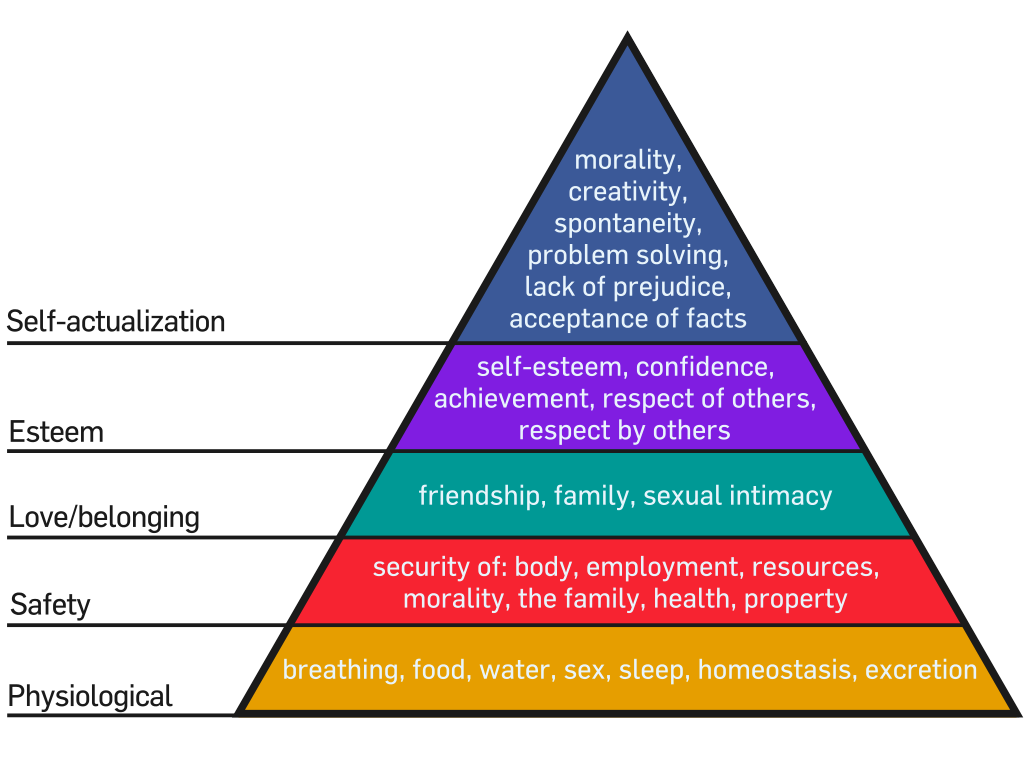
Abraham Harold Maslow (1908-1970)
On April 1, 1908, American psychologist Abraham Harold Maslow was born. He is best known for creating Maslow’s hierarchy of needs, a theory of psychological health predicated on fulfilling innate human needs in priority, culminating in self-actualization. He stressed the importance of focusing on the positive qualities in people, as opposed to treating them as a “bag of symptoms.”
“I suppose it is tempting, if the only tool you have is a hammer, to treat everything as if it were a nail.”
– Abraham Maslow, The Psychology of Science: A Reconnaissance (1966), Ch. 2, p. 15
Abraham Maslow Background
Maslow was born and raised in Brooklyn, New York, as the oldest of seven children to son of Samuel and Rose (Schilofsky) Maslow, a family of Jewish immigrants from Russia who fled from Czarist persecution in the early 20th century. His parents were poor and not intellectually oriented, but they valued education. Maslow and other young people at the time with his background were struggling to overcome acts of racism and ethnic prejudice in the attempt to establish an idealistic world based on widespread education and monetary justice. He went to Boys High School, one of the top high schools in Brooklyn, where he served as the officer to many academic clubs.
Maslow had a rather difficult relation to his parents. He perceived his mother as being entirely insensitive and unloving. She exhibited no sign of affection or love for anyone she encountered, even her own family. Maslow managed to become quite close with his uncle throughout his lifetime since his parents virtually alienated him. At the age of 17, Maslow enrolled at the City College of New York, and to appease his father, he registered for evening classes at the Brooklyn Law School in 1926. But, Maslow soon discovered that law was not for him and he transferred to Cornell University in Ithaca, New York, but he left after just one semester due to poor grades and high costs. He later graduated from City College and went to graduate school at the University of Wisconsin to study psychology in 1928. There he acquired his BA in 1930, and his MA in 1931 with a master’s thesis on “learning, retention, and reproduction of verbal material“, although he regarded the research as embarrassingly trivial, and his PhD in 1934.
Early work
“It is too often not realized that culture itself is an adaptive tool, one of whose main functions is to make the physiological emergencies come less and less often.”
– Abraham Maslow, A Theory of Human Motivation (1943)
In 1935, Maslow returned to New York to work at Columbia Teachers College where he met and was mentored by Alfred Adler, one of Sigmund Freud’s early colleagues.[4,5] Later, he worked as a psychology instructor at Brooklyn College, beginning in 1937, where he developed a relationship with Max Wertheimer,[6] a gestalt psychologist, and an anthropologist named Ruth Benedict. These two people were not only Maslow’s friends, but quickly became the subject of his research. He observed and assessed them and this formed the foundation for his theories on human potential and psychological well-being.[2]
After World War II, Maslow began to question the way psychologists had come to their conclusions, and though he did not completely disagree, he had his own ideas on how to understand the human mind. He called his new discipline humanistic psychology. From 1951–1969, Maslow was chair of the psychology department at Brandeis University in Massachusetts. In the late 1950s, humanistic psychology became increasingly popular, with Maslow widely regarded as its founding father. He was recognized for his contributions to the humanistic approach to psychology when he received the honor of Humanist of the Year by the American Humanist Association in 1967. Maslow died of a heart attack in 1970.
Humanistic Psychology
“The good or healthy society would then be defined as one that permitted people’s highest purposes to emerge by satisfying all their basic needs.”
– Abraham Maslow, Motivation and Personality (1954)
Maslow’s humanistic psychology is based on the belief that people are born with the desire to achieve their maximum potential or reach a point Maslow termed self-actualization. Maslow chose to focus his research on the experiences of emotionally healthy people, and he identified their “peak experiences,” moments when they were in complete harmony and unison with the world around them. Rather than focusing on deficiencies, humanistic psychologists argue in favor of finding people’s strengths.[2]

Abraham Maslow’s Hierarchy of Needs (via wikipedia)
Hierarchy of Needs
“Freedom, love, community feeling, respect, philosophy, may all be waved aside as fripperies that are useless since they fail to fill the stomach.”
– Abraham Maslow, Motivation and Personality (1954)
Maslow stated that people are motivated to achieve certain needs. One of the many interesting things Maslow noticed while he worked with monkeys early in his career, was that some needs take precedence over others. His hierarchy of human needs model suggests that human needs will only be fulfilled one level at a time. According to Maslow’s theory, when a human being ascends the levels of the hierarchy having fulfilled the needs in the hierarchy, one may eventually achieve self-actualization.
- At the bottom of Maslow’s hierarchy of needs are the “Basic needs or Physiological needs” of a human being: food, water, sleep and sex.
- The next level is “Safety Needs: Security, Order, and Stability“, important to the physical survival of the person. Once individuals have basic nutrition, shelter and safety, they attempt to accomplish more.
- The third level of need is “Love and Belonging“, which are psychological needs; when individuals have taken care of themselves physically, they are ready to share themselves with others, such as with family and friends.
- The fourth level is achieved when individuals feel comfortable with what they have accomplished. This is the “Esteem” level, the need to be competent and recognized, such as through status and level of success.
- Then there is the “Cognitive” level, where individuals intellectually stimulate themselves and explore.
- After that is the “Aesthetic” level, which is the need for harmony, order and beauty.
- At the top of the pyramid, “Need for Self-actualization” occurs when individuals reach a state of harmony and understanding because they are engaged in achieving their full potential.
Eric Dodson, Abraham Maslow, Lecture 1: Maslow’s Greatest Hits, [8]
References and Further Reading:
- [1] Maslow’s Hierarchy of Needs
- [2] Abraham Maslow at Britannica Online
- [3] Abraham Maslow via Shippensburg University
- [4] Alfred Adler and the Individual Psychology, SciHi Blog
- [5] Freudian Slips and other Trifles, SciHi Blog
- [6] Max Wertheimer and Gestalt Psychology, SciHi Blog
- [7] Abraham Maslow at Wikidata
- [8] Eric Dodson, Abraham Maslow, Lecture 1: Maslow’s Greatest Hits, Eric Dodson Lectures @ youtube
- [9] Abraham Maslov, “A Theory of Human Motivation” (originally published in Psychological Review, 1943, Vol. 50 #4, pp. 370–396).
- [10] “Dr. Abraham Maslow, Founder Of Humanistic Psychology, Dies”. The New York Times. June 10, 1970.
- [11] Hoffman, Edward (1988). The Right to be Human: A Biography of Abraham Maslow. New York: St. Martin’s Press.
- [12] Timeline for Abraham Maslow, via Wikidata





